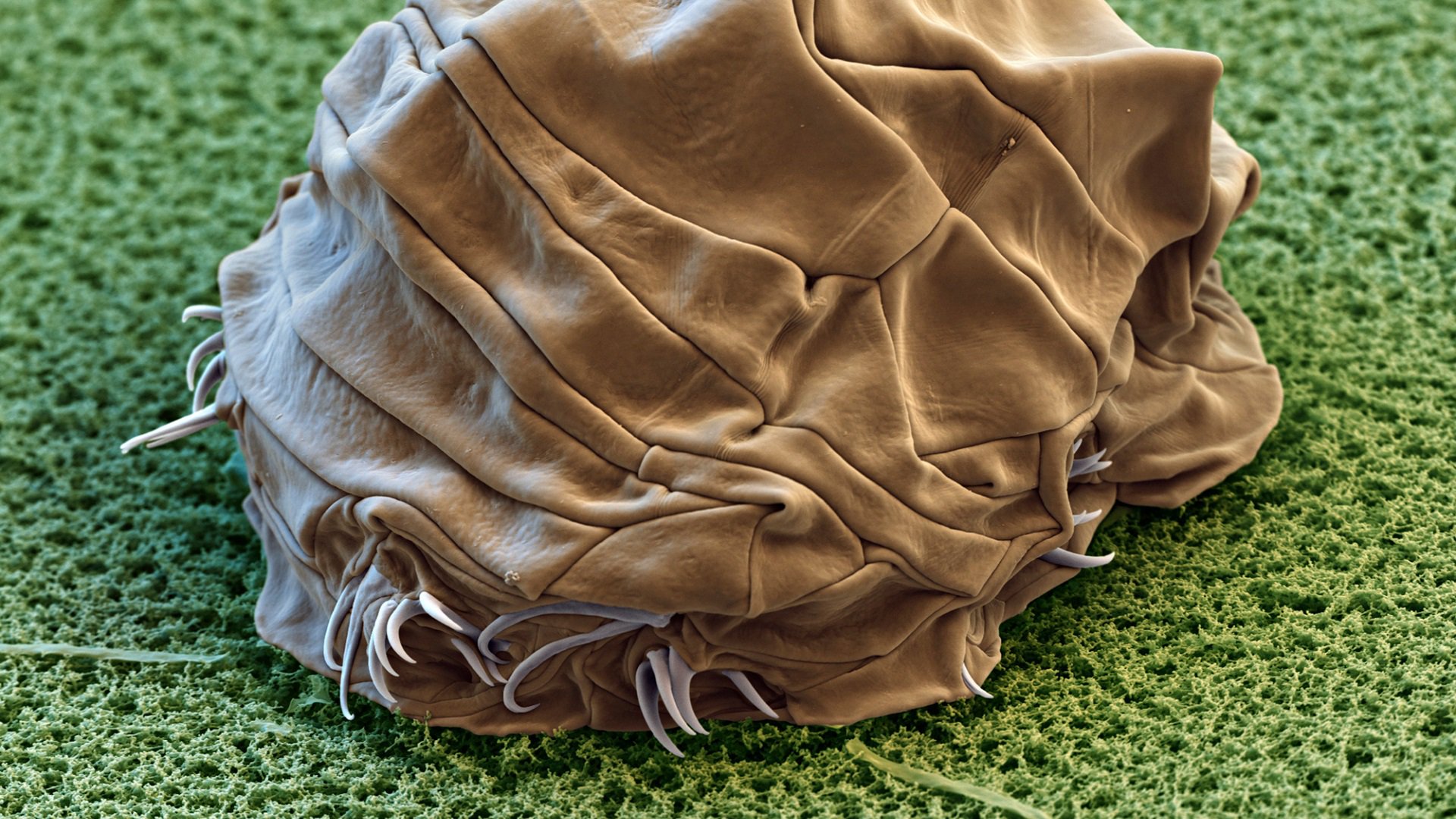Moon crash
This research was inspired by an Israeli space mission from 2019. A probe full of water bears, or tardigrades (Tardigrada), tried to land on the moon. But the lunar lander crashed. This immediately raised many questions. Would the tardigrades have survived the impact, and if so, have they now "contaminated" the moon? The researchers wanted to know whether the tardigrades could theoretically still be alive.
Waterbear bullets
To answer these questions, planetary scientists at the University of Kent put 20 tardigrades into a kind of hibernation called cryptobiosis. Freezing them for 48 hours reduced their metabolism to just 0.1%. They then placed two to four tardigrades at a time in a hollow nylon ball. These 'waterbear bullets' were fired at increasing speeds at a mound of sand a few meters away. The researchers found that these peculiar microbes could survive collisions of up to about 900 meters per second (or 3,000 kilometers per hour), and temporary pressures of up to 1.14 gigapascals (GPa).
The researchers thus proved that the tardigrades on board the Israeli lunar lander could not have survived. Not so much because of the speed of the impact - which was 'only' a few hundred meters per second - but mainly because of the pressure that the metal probe underwent during the impact. This was in fact far above 1.14 GPa.
Panspermia
Still, the results offer a new perspective on the theory called panspermia. This theory suggests that living organisms travelled from planet to planet as stowaways aboard meteorites. When asteroids hit planets or moons, debris full of life could be thrown into space. According to this theory, if these pieces of debris accidentally hit other planets or moons with the right conditions, they could provide life on previously 'dead' planets.
A very complicated process, but not impossible because of the immense scale of the universe, according to the researchers. Many meteorites strike at a much too high speed (8 to 11 kilometers per second). But research also shows that when a meteorite hits Earth, 40% of the debris could land on the lunar surface at speeds that waterbears could survive. Moreover, there are many microbes that even survive impacts of 5 kilometers per second. So theoretically, they could travel from planet to planet that way.
Water plumes
The research also offers opportunities to find life on the icy moons in our solar system. For example, Jupiter's moon Europa and Saturn's moon Enceladus both have subterranean oceans that may contain life. From these oceans they spray immense plumes of water – possibly full of microbial life – into space. So a spacecraft that would fly through these plumes of water at a relatively slow speed could sample existing life without smashing it.
Source
Tardigrade Survival Limits in High-Speed Impacts—Implications for Panspermia and Collection of Samples from Plumes Emitted by Ice Worlds. Traspas & Burchell, 2021, Astrobiology. https://www.liebertpub.com/doi/full/10.1089/ast.2020.2405

